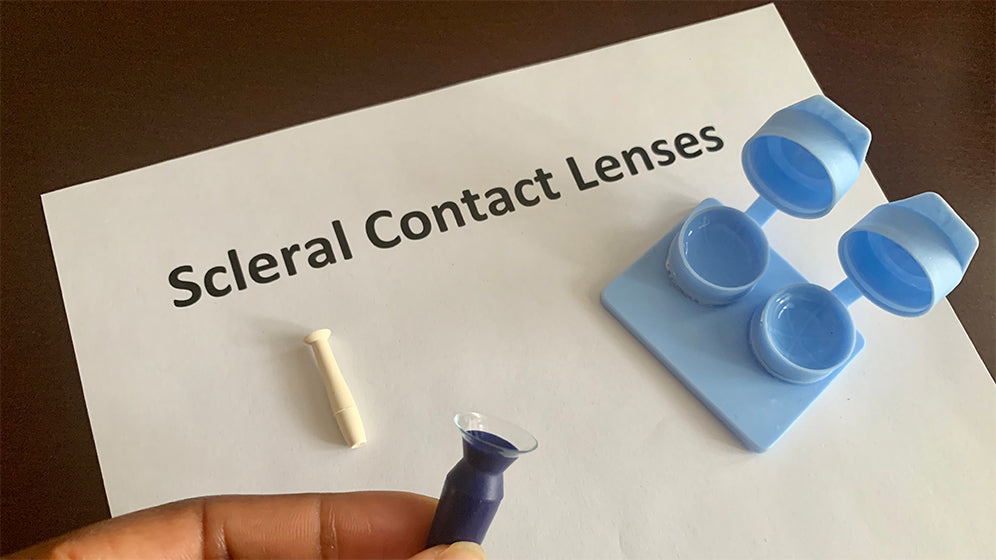Dry eye syndrome is one of the most common eye conditions worldwide, and anecdotally, up to two-thirds of patients seeing an eye care professional suffer from symptoms. Dry eye conditions may be challenging to treat and patients often struggle with finding a simple solution to solve their problem. In honor of Dry Eye Awareness Month in July, we wanted to share the skinny on dry eye.
Dry Eye Symptoms and Treatments
Dry eye symptoms can include burning, scratchy and red watery eyes that often feel like something is in them, blurred vision or light sensitivity, and are sometimes confused with allergies by patients. It may feel the same, but it’s actually a real disease referred to variously as “dry eye syndrome,” “dry eye disease,” simply “dry eye,” or medical terms such as “keratitis sicca,” “keratoconjunctivitis sicca,” or “dysfunctional tear syndrome.” No matter what it’s called, dry eye can have a significant impact on a patient’s daily life.
Dry eye symptoms are caused by a chronic lack of sufficient lubrication and moisture on the surface of eye, which can be the result of decreased tear production, increased tear evaporation, or an imbalance in the composition of tears. Age, certain medical conditions and medications, prior surgery (i.e. LASIK), screen habits and the environment can make eyes even drier and magnify the problem.
Dry eye can literally be a pain to manage and treat, for both eye care professionals and patients. A dry eye care regimen can consist of any combination of the following:
With so many options, finding the right combination is often a matter of trial and error. And despite the use of multiple treatments, dry eye discomfort is often not satisfactorily resolved for many patients.
Tangible Hydra-PEG Improving Dry Eye Symptoms
Wearing gas permeable (GP) contact lenses can make treatment even more challenging. Introducing an inherently dry contact lens into an already dry eye can be uncomfortable and may make wearing GP, or “hard,” lenses impossible for some patients. In fact, dry eye discomfort is the main reason patients stop wearing contact lenses altogether.
A new technology has come on the scene in the last couple of years that has shown the ability to improve dry eye symptoms – Tangible® Hydra-PEG®. It’s an ultra-wettable coating that is permanently bonded to GP contacts and is so compatible with the environment of the eye that it effectively “hides” the dry lens from the eye. Not only does this make for a more comfortable lens experience, but it also reduces problems like deposits and fogging that are associated with certain types of lenses.
A study of the coating applied to a popular type of GP lens – scleral lenses – conducted by Dr. Chandra Mickles of Nova Southeastern University College of Optometry showed significant patient improvements in comfort, dry eye symptoms, dry eye signs, contact lens wearing time and foggy vision when wearing coated lenses compared to normal lenses.
While not a “cure” for dry eye, Tangible Hydra-PEG is considered by many eye care professionals as a first line defense against dry eye to improve symptoms before they even appear. Dr. Chad Rosen, Associate Professor at the Michigan College of Optometry, sums up how one dry eye patient benefitted from coated lenses: “The patient returned after six months of wearing the new lenses and stated complete happiness. She described her comfort as a 9 out of 10, stated she wore the lenses almost every day without any dryness or discomfort, and noted her vision was the sharpest she’d ever had in glasses or contact lenses.”
Are you interested in learning more about Tangible Hydra-PEG, and our new contact lens cleaning solution Tangible Clean? Check out our product page for more information, and purchase today!



